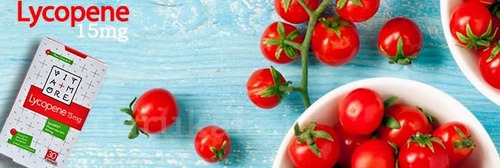Common mechanism of lycopene and statins in reducing blood cholesterol
lycopene

Statins are drugs that inhibit the enzyme responsible for making cholesterol, 3-hydroxy-3-methylglutaryl coenzyme A reductase (HMG-CoA), which reduces cholesterol synthesis in the liver. This group includes simvastatin, atorstatin, lovastatin, etc. Although statins are very effective drugs in reducing blood cholesterol, their negative effects include muscle pain, muscle weakness, and neuropathy in some patients.
Common mechanism of lycopene
Statins are drugs that inhibit the enzyme responsible for making cholesterol, 3-hydroxy-3-methylglutaryl coenzyme A reductase (HMG-CoA), which reduces cholesterol synthesis in the liver. This group includes simvastatin, atorstatin, lovastatin, etc. Although statins are very effective drugs in reducing blood cholesterol, their negative effects include muscle pain, muscle weakness, and neuropathy in some patients.
In addition to containing useful nutrients such as folate, vitamin A, vitamin C, vitamin E and phytochemicals such as polyphenols, tomatoes also contain a natural pigment called lycopene. Lycopene, a carotenoid is responsible for the red color of tomatoes, watermelons, and pink grapefruits. In general, ripe red fruits and vegetables contain lycopene
Cooking and processing also increase lycopene content and bioavailability. Dietary fat increases the absorption of lycopene by increasing the production of bile to form bile micelles. The absorption rate of lycopene in humans is 10-30%. The amount of lycopene in each gram of fresh tomato and watermelon is 42-8.8 and 23-72 micrograms respectively.
A meta-analysis study shows that taking lycopene in doses above 25 grams per day effectively reduces LDL cholesterol by about 10%, which is comparable to low-dose statins in patients with mildly elevated cholesterol levels. The cholesterol-lowering effects of lycopene are basically the result of its accumulation in the liver, so that it inhibits the cholesterol-synthesizing enzyme, 3-hydroxy-3-methylglutaryl coenzyme A
These results indicate the same mechanism of statins and lycopene in reducing blood fat. Therefore, lycopene can increase the effects of statins and reduce the dose of cholesterol-lowering drugs.reductase (HMG-CoA)..




comment